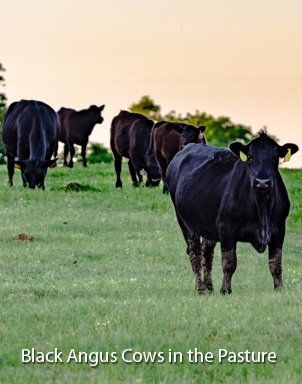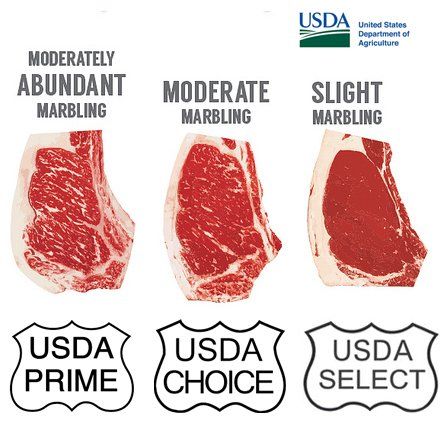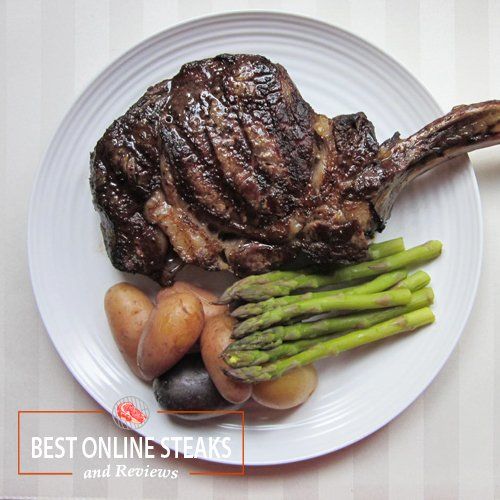STEAK 101
How the USDA Grades American Beef
Introduction To USDA Grading System of American Beef (Purpose of USDA Grading System)
- USDA Prime
– The highest grade with the most fat and marbling.
- USDA Choice
– Roughly 50% of all beef, commonly found in markets and restaurants.
- USDA Select
– Also available in retail markets, but leaner and less juicy.
- Standard and Commercial
– Usually sold ungraded and under store brands.
- Utility
(Cutter and Canner Grades) – No fat or marbling, typically older animals and used for processed and canned products with beef.
Now, that is already a lot of terms just for a buying a piece of meat. There are so many choices, leaving most consumers may feel confused and frustrated. So, how does one make sure that what they are buying is worth their hard-earned money?
This is where the USDA grading system comes in. It is a grading system developed by the Department of Agriculture of the United States. They were founded back in the early 1920s when the government organized an effort to staple services and establish a standard grading for the retail meat industry and livestock. They run a voluntary meat grading system for independent producers who aim to deliver to their consumers the best possible eating experience with every bite of their meats.
The grading system is based on the level of maturity and fat marbling of meat cuts. Both factors are determinants of the meat’s tenderness. They provide consumers with an accurate system for purchasing beef; a reliable tool for additional information to utilize when making a purchasing decision.
For manufacturers to receive USDA grading on their beef, they pay registered AMS inspectors to grade their product right after their cattle are slaughtered. Once graded, manufacturers may now label their meat packages according to the Food Safety and Inspection Services.
The USDA grading system has eight grades they can assign meat. Prime is the highest followed by the four grades of choice, select, and standard. The next four lower grades of commercial, utility, cutter, and canned will be used for processed and canned goods.

Where American Beef Comes From
When people are asked where their beef comes from, they most likely imagine a picture of black-and-white cattle. This is probably due to the way media has conditioned the minds of the public with effective skews of advertisements. The truth is, what everyone might be picturing are dairy cattle. Though they may play a significant role in food production with the milk they produce; they fall short with their muscle mass.
Beef may be harvested from bovines, especially those from cattle. They normally come from cows, heifers, bulls, and steers. Bovines are a subfamily of mammals, including oxen, buffalo, and cows. Antelopes, sheep, and goats also belong to this group.
Female cattle are called cows, whereas male cattle are bulls. Cows are the most widespread kinds of the genus Bos and are mainly domesticated. Bulls, on the contrary, are more aggressive and muscular, with thicker bones, bonier head, and larger feet. The meat muscles from younger cows and bulls are leaner and are cut into steak, short ribs, and roasts. Since the legs and the neck muscles receive the most work, they are the toughest, so other parts of the body are most preferred. Meat from older cows and bulls are tougher, thus they are usually used as ground beef.
How Marbling Affects Tenderness of Beef?
Though marbling of beef probably holds the biggest share when it comes to affecting tenderness of beef, how meats are processed before slaughtering may also affects meat’s tenderness. Cattle ambushed and killed cleanly are less likely to be stressed than those that are hunted. Unstressed cattle give superior meat, making them a better commodity.
The lack of aging that has to do with how tough or lean meats become is another important factor. Generally, as cattle age the interconnectivity of their connective tissues increases, causing cooking time to be longer. However, when it comes to cattle production, aging does not mean they have to be aged for years before harvested. This just means that young cattle are aged for some weeks. Studies show that aged young cattle killed without stress get a low muscle pH, putting them at 7.5kg/force tender.
The Grading System of USDA
The degree given to marbling is divided into 100 subunits. So, a Prime beef of Prime+ will get abundant marbling of 00-100°, Prime with moderate abundant marbling of 00-100° and Prime- of slightly abundant with 00-100°. For Choice cut beef, Choice+ will have a grading of moderate 00-100°, Choice with modest marbling of 00-100°, and for Choice- with small marbling of 00-100°. Select beef, on the other hand, only has two grades, Select+ of slight marbling with 50-100° and Select- of slight marbling with 00-49°. The last of the highest four grades is standard beef, with grades of 34-100° traces of marbling for Standard+, practically devoid traces of 00-33° marbling for Standard, and practically devoid of 00-66° of marbling for Standard- beef. The rest of the remaining four lower grades will be graded based on the firmness of the muscle of the meat, and its color and texture.
Maturity of the cattle also has a big impact on the grading system. Determinants of this factor are not the literal age of the cattle, rather are their rib bone characteristics, the color and texture of their muscle, and ossification of their cartilage. For instance, a grade A maturity carcass has narrow and oval with red ribs, whereas a level E carcass is white in color, with a wide and flat rib cage. The color of ribs right after level C maturity decreases as maturing cattle of this level gradually lose their prime red color and are becoming whiter due to the fact that red blood cells are no longer produced.
Maturity grades are level A for 9 to 30 months, B for 30 to 42 months, C for 42-72 months, D for 72-96 months, and level E for 96 months and above. For the appearance of the ribs, USDA will grade Level A with narrow and oval ribs, slightly wide and flat for level B, slightly wide and moderate flat for level C, and moderate wide and flat for level D, and wide and flat for Level E. And for the color and texture, Grade A will have light cherry-red color and very fine lean texture, Grade B will have light cherry-red in color to slightly dark red and fine lean texture. For level C, they will have moderate light red to moderate dark red color and moderate fine lean texture. For grade D, they have moderate dark-red color to dark red and slightly coarse lean texture, and for grade E, they have dark red to very dark red in color and a coarse texture.
Different Grades of the USDA Grading System
There are eight kinds of grades the USDA may assign a meat depending on the number of its marbling. Factors like its firmness, texture, maturity, and color may also play a part during grading. Trained AMS inspectors evaluate the distribution of marbling quality through the cut surface within the Ribeye muscles between the 12th and the 13th ribs.
Learning to identify beef quality by marbling will help you buy steaks with the most flavor and at the best value, even it it appears a steak you are interested in might appear to be mislabeled. Here is a guideline provided by the USDA for your reference.


What is USDA Prime?
The first grading is prime beef. This is the highest quality grade when it comes to tenderness, flavor, and juiciness given by the USDA. It comes from young cattle with a carcass maturity of 9 to 30 months, and with marbling score of 00-100° abundant marbling to 00-100° moderate abundant and slightly abundant marbling. Because it is of superior quality, only about two percent or less will be visibly displayed in the market.
Because USDA Prime steaks have the most marbling, their buttery flavor makes them absolutely tasty and close to perfectly tender. This is probably why high-end hotels and restaurants will price their prime steaks at as much as $100 to $300 for a piece of gourmet meat alone. Prime choice meats are stamped as “USDA Prime,” and represent about 2% of all the beef harvested in the U.S. Here is a picture of a USDA Prime Tomahawk Ribeye we enjoyed from Allen Brothers.

What is USDA Choice?
USDA Choice beef is the second highest grade. It is less expensive than prime, but is as juicy and tender. It has moderate marbling of 00-100° is of 30 to 42 months of maturity. Its colors are from light cherry-red to slightly dark red with slightly wide and flat ribs.
The best cut choice comes from the primal lion and rib. They are best for grilling, steaks, marinating, and roasting. About of the meats sold in the U.S. receive this grading. They are stamped with “USDA Choice,” and are good quality steaks you will find in most local markets, as well as at the online steak websites.
Here is a picture of USDA Choice NY Strip Steak from FreshDirect, a company that specializes in offering customers a high-quality selection of local meat, and in this case, Black Angus. They also have USDA Prime, and Prime Reserve, which represents the top 2% of all beef produced in the U.S.

What is USDA Select?
The next grade is Select beef, which is lower in price with fewer marbling of 50-100° making it leaner, and not as juicy and flavorful. It comes from cattle age 42 to 72 months with moderate light red to moderate dark red in color and slightly wide to moderate flat ribs. The best cuts for select meat are from the lion and rib. Because they have been less marbled, it is best to braise or marinate them to obtain flavor and tenderness.
The last among the highest grades is Standard beef. Its marbling is practically devoid at 67-100° and is harvested mostly from cattle of 72 to 96 months. It has moderately wide to flat ribs and is moderately dark red to dark red in color. Because Standard meats are low in fat and less in marbling, cooking time may take longer. Heavily seasoned, it is best for grilling and roasting, but not as flavorful and tender. In most cases you will find USDA Select beef so labeled as "USDA Graded," or "USDA Inspected" without a quality assigned to it.
Other Grades of Beef
The other four lower grades of meat are Commercial, utility, cutter, and canner. The cattle they come from are those of grade C, D, and E with a maturity of 42 months to 96 months and more. They can have zero marbling with white to extremely hard chine bones, and wide to flat rib cages. Meat color can be of dark red to very dark red and coarse in texture. They are lower in price and are mostly used for canned goods and processed meat products.
Aging and Tenderization of American Beef
Aging is a process most manufacturers use to improve beef’s tenderness. The oldest way of aging is dry-aging. It is done by hanging the meat within humidity-controlled refrigerators where the temperature is maintained at 36° F in order to prevent spoilage and growth of mold and bacteria.
To seal protein, intensity and flavor, evaporation is just another phase aged meat goes through. As the proteolytic enzymes weaken myofibrillar proteins, tenderization starts within the first ten days. For maximum results, most steakhouses dry-age their meat within 21 to 28 days.
Dry-aging of meat these days is only applied to the highest grades. Because marbling is evenly distributed, the flavor and juiciness are more heightened. Nonetheless, only a small percentage of steakhouses dry-age their prime meats because of the high price and cost they incur for maintenance and space. Furthermore, because of the weight loss of meat after being dry-aged they may also lose substantial profit.
Summary
The quality of any beef is a composite evaluation of how tender, juicy, flavorful, and how great your experience will be. Thanks to the USDA grading system, consumers may now ensure that what they get is worth their hard-earned money. Anyone can now enjoy the grades of beef without the fear of being confused or getting tricked into buying lower grades or unlabeled cuts that are usually commercial or utility grades. Checking for USDA grading surely helps anyone to ensure that what they get is of high quality.

